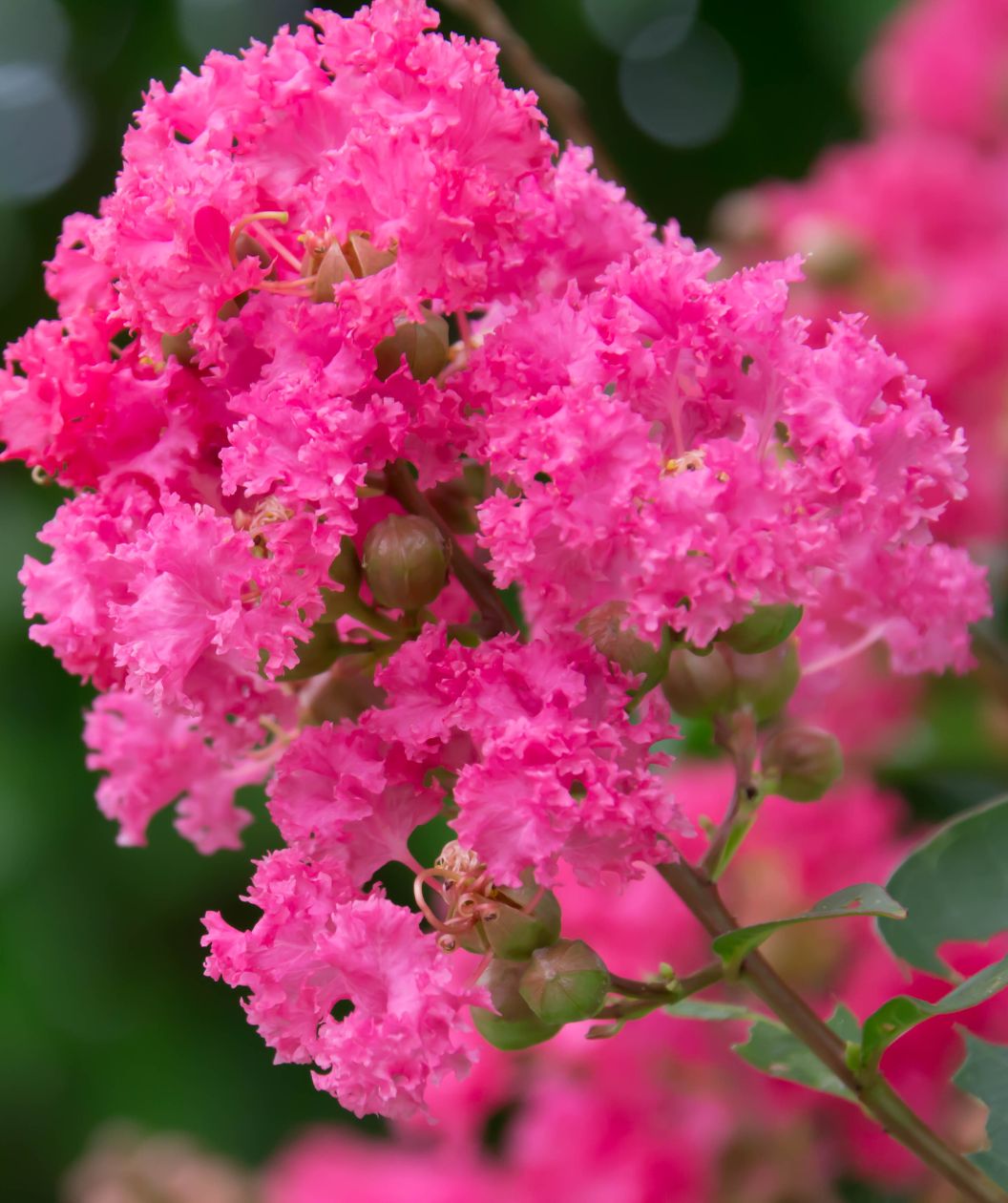The Hopi Crape Myrtle features cheerful pink blooms, vibrant fall foliage, and a compact size.
FEATURES:
- Bright pink flower clusters bloom in summer
- Foliage turns vivid orange-red in fall
- Cold-hardy and mildew-resistant
- Ideal for small landscapes and beneath power lines
- Ships on our trucks because of the size of the tree – does not fit in a box
Bower & Branch Landscape Design Tip:
Hopi Crape Myrtle shines in sunny front yards, corner beds, or along fences. Its compact shape makes it perfect near patios or walkways, and it pairs well with evergreens for contrast and winter interest.
Growth Facts
- Hardiness Zone: 6–9
- Mature Height: 8–10 feet tall
- Mature Width: 6–8 feet wide
- Exposure: Full sun
- Spacing: 5–8 feet apart for rows or massing
The Hopi Crape Myrtle features cheerful pink blooms, vibrant fall foliage, and a compact size.
FEATURES:
- Bright pink flower clusters bloom in summer
- Foliage turns vivid orange-red in fall
- Cold-hardy and mildew-resistant
- Ideal for small landscapes and beneath power lines
- Ships on our trucks because of the size of the tree – does not fit in a box
Bower & Branch Landscape Design Tip:
Hopi Crape Myrtle shines in sunny front yards, corner beds, or along fences. Its compact shape makes it perfect near patios or walkways, and it pairs well with evergreens for contrast and winter interest.
Growth Facts
- Hardiness Zone: 6–9
- Mature Height: 8–10 feet tall
- Mature Width: 6–8 feet wide
- Exposure: Full sun
- Spacing: 5–8 feet apart for rows or massing
Why plant Hopi Crape Myrtle?
Developed by the U.S. National Arboretum, Hopi was bred for beauty and cold resistance. It thrives where other Crape Myrtles struggle and stands out for its extended bloom time and stunning fall color. Grown into a landscape-ready size by Bower & Branch, it arrives ready to make an impression.
How to use Hopi Crape Myrtle in the landscape?
Frequently Asked Questions
Yes. Hopi is one of the most cold-tolerant Crape Myrtles available, making it a great choice for Zone 6 and areas where winter temperatures dip lower.
Hopi typically blooms from midsummer into early fall. Regular deadheading can encourage extended flowering well into the season.
Hopi Crape Myrtle prefers well-drained soil but is adaptable. If planting in clay, improve drainage with organic matter or by planting on a slight mound.





